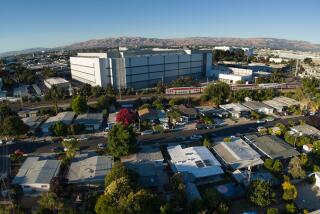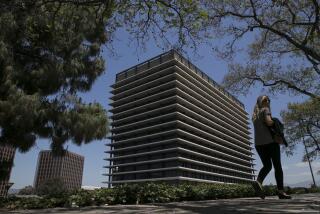California has too much solar power. That might be good for ratepayers
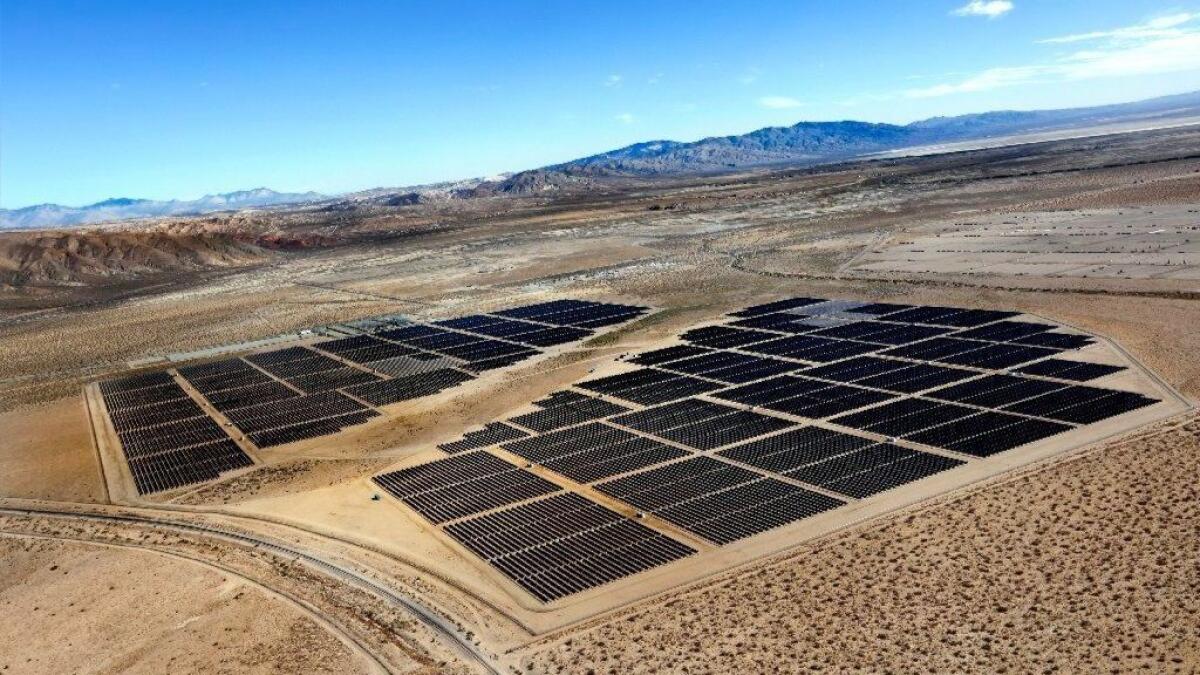
- Share via
California set two renewable energy records last week: the most solar power ever flowing on the state’s main electric grid, and the most solar power ever taken offline because it wasn’t needed.
There’s no contradiction: As California utilities buy more and more solar power as part of the state’s quest to confront climate change, supply and demand are increasingly out of sync. The state’s fleet of solar farms and rooftop panels frequently generate more electricity than Californians use during the middle of the day — a phenomenon that has sent lawmakers and some climate advocates scrambling to find ways to save the extra sunlight rather than let it go to waste.
But for ratepayers, an oversupply of solar power might actually be a good thing.
New research published in the peer-reviewed journal Solar Energy suggests California should embrace the idea of building more solar panels than it can consistently use, rather than treating oversupply as a problem to be solved. It sounds counterintuitive, but intentionally overbuilding solar facilities — and accepting they’ll often need to be dialed down in the absence of sufficient demand — may be the best way to keep electricity prices low on a power grid dominated by renewable energy, the research found.
In a study published in March, New York-based researchers Richard Perez and Karl Rábago argue that solar power has gotten so inexpensive that overbuilding it will probably be the cheapest way to keep the lights on during cloudy or overcast days — cheaper than relying entirely on batteries. Solar power can meet high levels of daytime electricity demand without energy storage, the researchers say, as long as there are enough solar panels on the grid during times when none of them are producing at full capacity.
“It’s not like solar is going to be available all the time,” said Perez, a solar energy expert at the State University of New York at Albany. “At night you will need storage, and on cloudy days you will need storage. But you will need much less of it.”
A war is brewing over lithium mining at the edge of Death Valley »
California has set a target of 60% renewable energy on the power grid by 2030, as well as a longer-term goal of 100% climate-friendly energy, a broader definition that could include hydroelectricity or nuclear power. A dozen other states and U.S. territories have adopted or are considering similar 100% clean energy goals, and they’ll be watching California’s progress as they try to figure out how to make those goals a reality.
The Golden State’s success depends in part on achieving its goals without sending energy prices soaring. California already has some of the country’s highest electricity rates, although low levels of energy use mean monthly bills are relatively low.
Perez and Rábago coauthored their study with analysts at Clean Power Research, a company with offices in California and Washington state. The study built on an earlier Clean Power Research report, which showed that in Minnesota — a state not known for abundant sunlight — the cheapest way to run the power grid with solar panels, wind turbines and batteries involved building so many solar panels that their output would have to be “curtailed,” or reduced below what they’d otherwise be capable of producing, by around 30%.
Under a range of high-curtailment scenarios, the report found, electricity would be slightly cheaper than it is today in Minnesota — a conclusion that Perez and Rábago found to hold true for many power grids.
Models run by the California Public Utilities Commission, examining the state’s options for reducing planet-warming emissions while maintaining reliable and affordable electricity, have also found that a surplus of solar power makes sense.
“What the models said was dramatically overbuild solar, and either export it when you have excess production or curtailment,” said Edward Randolph, who leads the regulatory agency’s energy division. “Curtailment makes economic sense.”
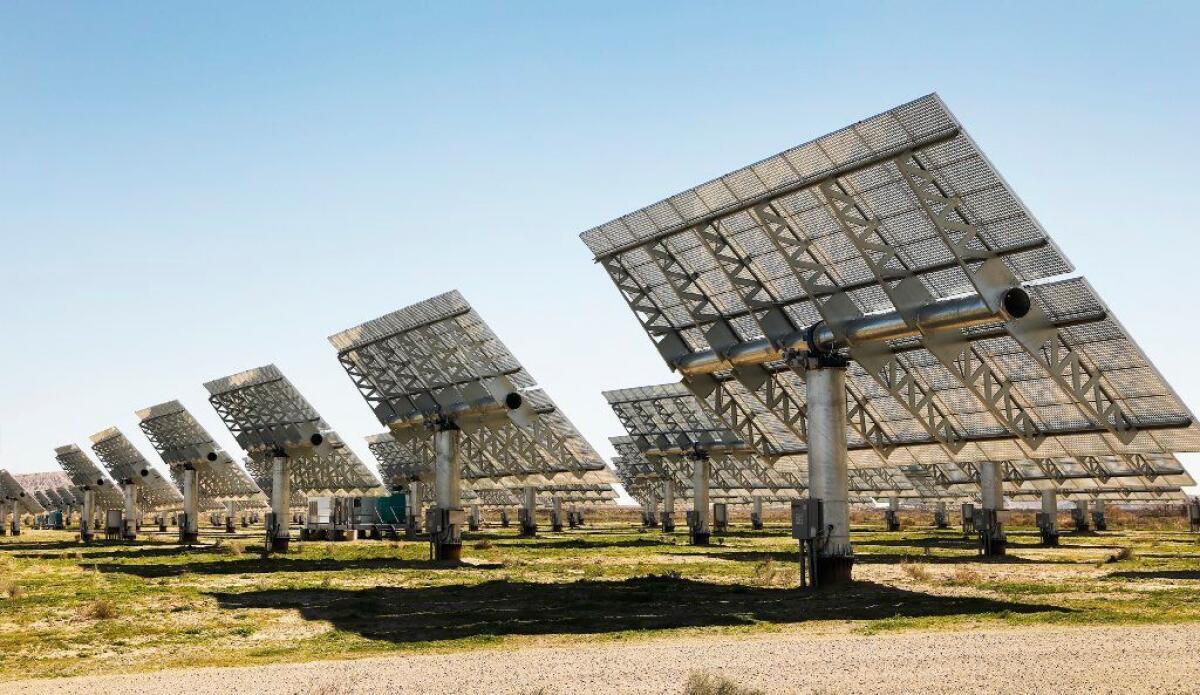
The argument for overbuilding solar power isn’t new, nor is it especially controversial among researchers who study the logistics of transitioning from fossil fuels to cleaner energy sources. Utility regulators have always built extra power into their planning, requiring enough electric generating capacity on the grid to ensure there will almost always be sufficient power on hand to meet energy demand.
Traditionally, that reserve margin has come from fossil fuels. Overbuilding renewables is a similar concept.
Some experts, though, are skeptical about the sheer scale of overbuilding contemplated by Perez and Rábago.
Wade Schauer, a Sacramento-based researcher at the energy consulting firm Wood Mackenzie, said Perez and Rábago didn’t take into account the costly transmission lines that may be needed to accommodate an overbuild of solar, or the landowner opposition that has frustrated solar farm developers in California and elsewhere. The researchers also assumed energy storage costs will remain “laughably high,” Schauer said — an assumption that makes batteries look less attractive compared with overbuilding solar.
How will L.A. replace three gas plants that Mayor Eric Garcetti plans to shut down? »
California got 34% of its electricity from renewable sources in 2018, the state’s Energy Commission estimates, not counting production from rooftop solar panels, which would add several more percentage points. Solar power has grown especially fast in recent years, spurred by falling costs, federal tax credits and California’s renewable energy mandate.
The state’s main power grid set a record for most simultaneous solar generation just before noon on June 1, breaking previous records set in April and May.
The growing amounts of solar power have been accompanied by growing curtailment, according to the California Independent System Operator, which runs the state’s main power grid.
Solar and wind farms on the California grid generated 223 fewer gigawatt-hours than they otherwise would have in May, with solar accounting for the vast majority of the losses. That’s enough electricity to power roughly 400,000 average California households, and more than twice as much curtailment as any month before this year. The numbers are especially high in part because of an influx of cheap hydropower following a wet winter.
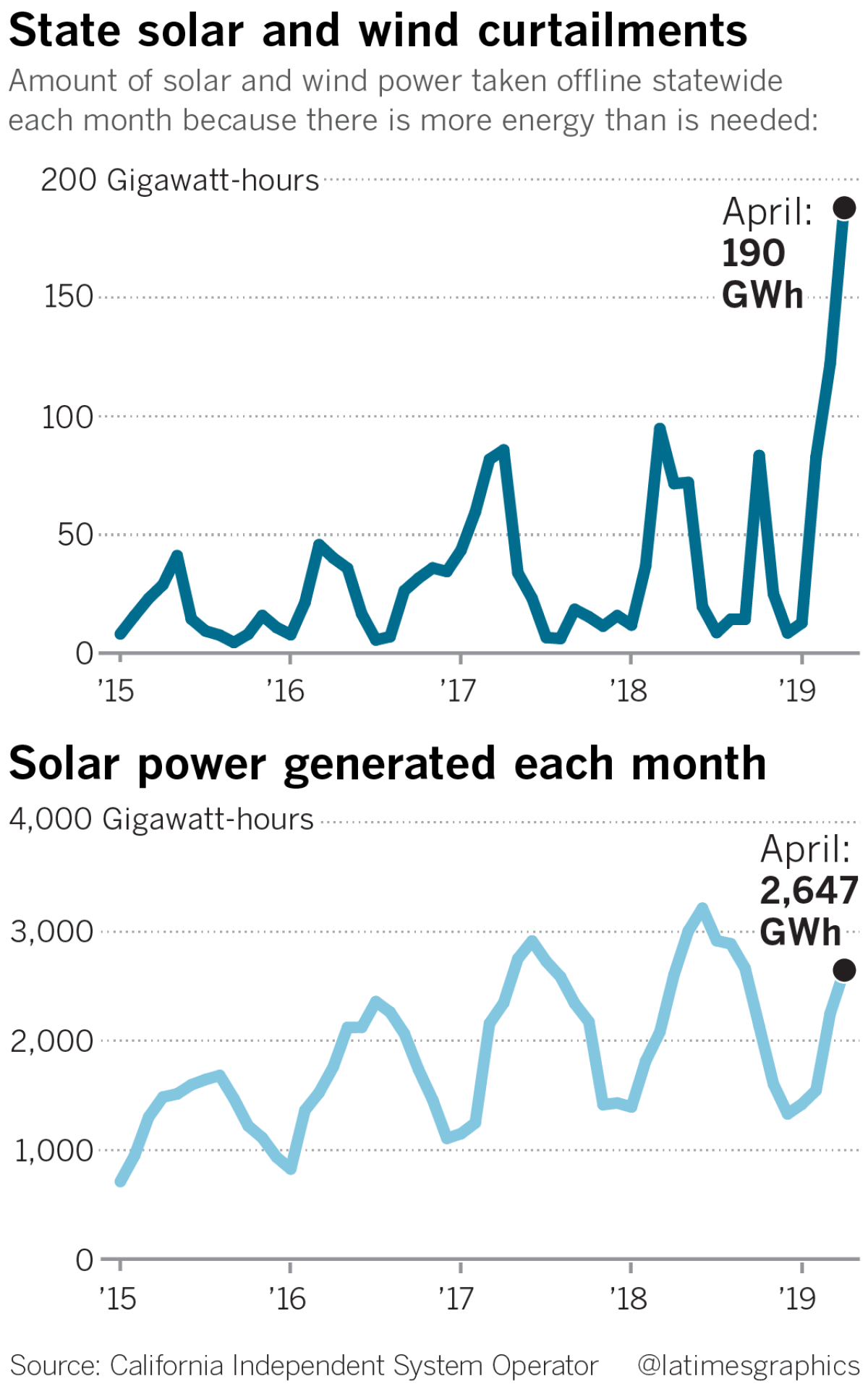
On May 27 around 1 p.m., solar plant operators shut off a record total of about 4,700 megawatts of capacity at the same time — nearly 40% of the entire solar capacity installed on the California grid.
Those numbers sound large, but they’re still relatively small, said Mark Rothleder, the grid operator’s vice president for market quality and regulatory affairs.
In 2018, less than 2% of potential solar generation was curtailed, Rothleder said, a number that may reach 3%-4% this year. The vast majority of curtailments happen through a competitive market, where solar and wind plant operators are paid to ramp down production. In rare instances, the grid operator will manually order certain facilities to ramp down.
Rothleder sees some overbuilding as a good thing, because it creates flexibility for the grid operator. Instead of relying entirely on gas-fired power plants to ramp up and down to match swings in demand, the nonprofit agency can get creative with solar farms, curtailing their production as needed or holding some solar in reserve for times when energy demand might jump unexpectedly.
The key question is how much extra solar power is beneficial, and how much is a waste of money. Rothleder said overbuilding and curtailment are no substitute for the types of steps California will eventually need to take to fully replace fossil fuels with clean energy, such as investing in big energy storage projects, sharing more solar and wind power with neighboring states, and designing electricity rates that encourage people to shift their energy use to times of day when the sun is shining or the wind is blowing.
“If [curtailment] starts inching up toward 10%, and greater than 10%, you have to start looking at it and asking what else can you be doing,” Rothleder said. “I don’t think at that point just building more solar is the right thing to do.”
California’s wildfire threat could be an opportunity for clean-energy microgrids »
Lawmakers in Sacramento have debated the types of steps described by Rothleder, but haven’t found much consensus.
Last year, for instance, the Legislature once again rejected then-Gov. Jerry Brown’s plan for greater sharing of renewable energy across the West. The proposal would have unified the region’s disparate power grids, reducing curtailment by allowing greater sharing of renewable energy across state lines, but lawmakers feared California could lose its sovereignty over its energy supply.
More recently, a bill that would have required huge amounts of large-scale, long-duration energy storage — a type of storage for which lithium-ion batteries aren’t well-suited — was pulled from the Senate floor, amid concerns it would burden consumers with steep costs and prop up a controversial hydropower project near Joshua Tree National Park.
Those proposals were driven in part by rising alarm over curtailment, and by the revelation that California sometimes pays other states to take its excess solar power. The Natural Resources Defense Council’s Ralph Cavanagh, for instance, wrote last year that lawmakers should support Brown’s regional power grid plan because “wasting growing amounts of our state’s clean energy is no way to advance California’s ambitious energy and climate goals.”
Part of the problem with these debates is that it’s hard to predict what different technologies will cost in the coming decades, said James Bushnell, an energy economist at UC Davis. Maybe solar will keep getting cheaper, and battery costs won’t fall as much as analysts expect. Or maybe not.
“If you think you know what all the costs and operating characteristics of resources will be 20 years from now, we can write fancy computer models that will optimize all that. But we don’t really know,” Bushnell said. “Too many studies circulate implying that we do.”
More to Read
Inside the business of entertainment
The Wide Shot brings you news, analysis and insights on everything from streaming wars to production — and what it all means for the future.
You may occasionally receive promotional content from the Los Angeles Times.

